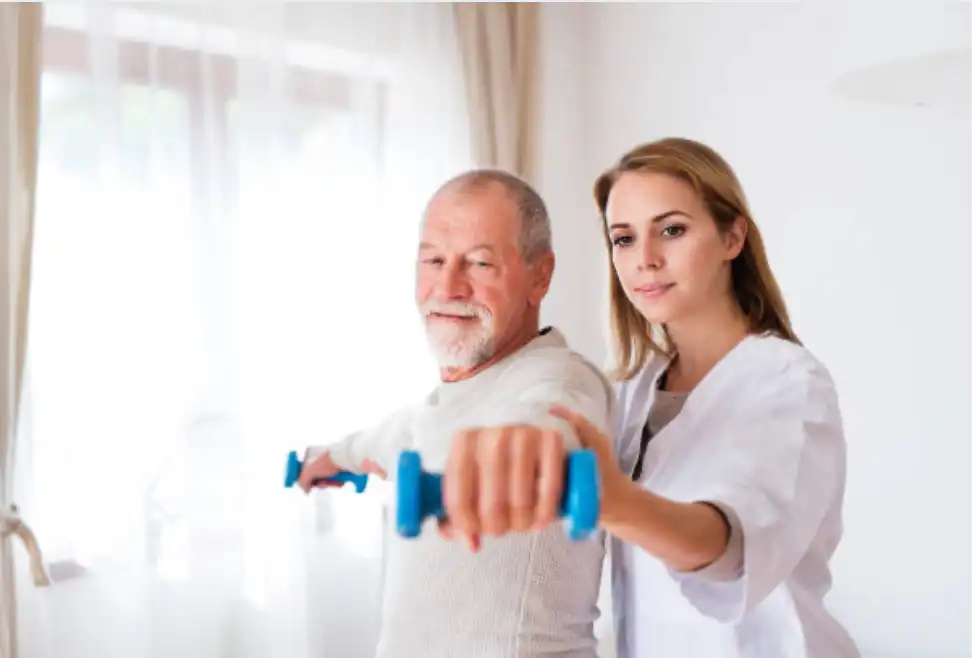Introduction: A Silent Epidemic Affecting Florida Seniors
Did you know that one in two women and one in four men over the age of 50 will experience a bone fracture due to osteoporosis? Compression fractures are a silent epidemic among seniors, often resulting in pain, decreased mobility, and a reduced quality of life. In the sunny state of Florida, where the elderly population is prominent, understanding how to prevent these fractures is crucial for aging gracefully. Here at "Be On The Move," we believe in empowering seniors with knowledge and tools to maintain their bone health.
Understanding Compression Fractures
Compression fractures occur when the bones in the spine weaken and crumble. This is often due to osteoporosis, a condition where bones become fragile and more prone to fractures. While anyone can be at risk, factors such as age, gender, genetics, and lifestyle can increase susceptibility. For our South Florida residents, maintaining bone health is not just about physical wellness but also about preserving independence and enjoying life to the fullest.
The Impact of Compression Fractures
Compression fractures can lead to chronic pain, reduced height, and a hunched posture, significantly impacting daily activities. Emotionally, they can cause feelings of isolation and frustration. Understanding these impacts can help motivate positive changes in lifestyle and health practices.
Layered Actionable Advice for Bone Health
Basic Tips: Starting Small
- Boost Calcium and Vitamin D Intake: Ensure a diet rich in calcium (found in dairy products, leafy greens, and fortified foods) and vitamin D (from sunlight, fish, and supplements) to strengthen bones.
- Stay Hydrated: Water is crucial for overall health, including maintaining bone density. Aim for at least 8 cups a day.
Intermediate Tips: Building Strength
- Engage in Weight-Bearing Exercises: Activities like walking, dancing, or tai chi can enhance bone strength without overstraining.
- Balance and Coordination Exercises: Practice yoga or Pilates to improve balance and prevent falls, a common cause of fractures.
Advanced Tips: Taking It Further
- At-Home Physical Therapy: Personalized exercises with a certified therapist can target specific areas of weakness, improve mobility, and offer emotional support.
- Regular Medical Check-Ups: Ensure regular bone density tests and consultations with healthcare professionals to monitor bone health.
Benefits of At-Home Physical Therapy
At-home Physical Therapy provides a unique opportunity for seniors to receive personalized care in the comfort of their own home. This approach not only enhances physical health but also boosts emotional well-being by reducing anxiety associated with clinic visits. It fosters a supportive environment where seniors can work on their mobility goals with guidance and encouragement.
Local Resources and Community Support
Palm Beach County offers numerous resources and community events focused on senior wellness. Engaging with local groups can provide social interaction and additional support in maintaining bone health. From fitness classes to wellness seminars, there are endless opportunities to stay active and informed.
The Transformative Power of Consistent Practice
Consistency is key in preventing compression fractures. Establishing a routine with regular exercises, a balanced diet, and professional guidance can lead to significant improvements in bone health. Emotional resilience grows alongside physical strength, leading to a holistic approach to aging gracefully.
Conclusion: Embrace a Healthier Future
Preventing compression fractures is a crucial step towards maintaining independence and enjoying a vibrant life in your golden years. By implementing these bone health tips, seniors can take control of their wellness journey. At "Be On The Move," we're here to support you every step of the way. Discover more about our at-home Physical Therapy services and contact us for personalized guidance. Stay tuned for more valuable insights in our upcoming articles!
See you soon,
//❤️ Trudy//
The information provided in this article is intended for general educational and informational purposes only. It is not a substitute for professional medical advice, diagnosis, or treatment. Always seek the advice of your physician or other qualified health provider with any questions you may have regarding a medical condition or before starting any new exercise program. If you experience any pain or difficulty with exercises or advice mentioned in this article, stop immediately and consult your healthcare provider. Be On The Move and its representatives do not assume any responsibility for any aspect of healthcare administered with the aid of information provided herein.




